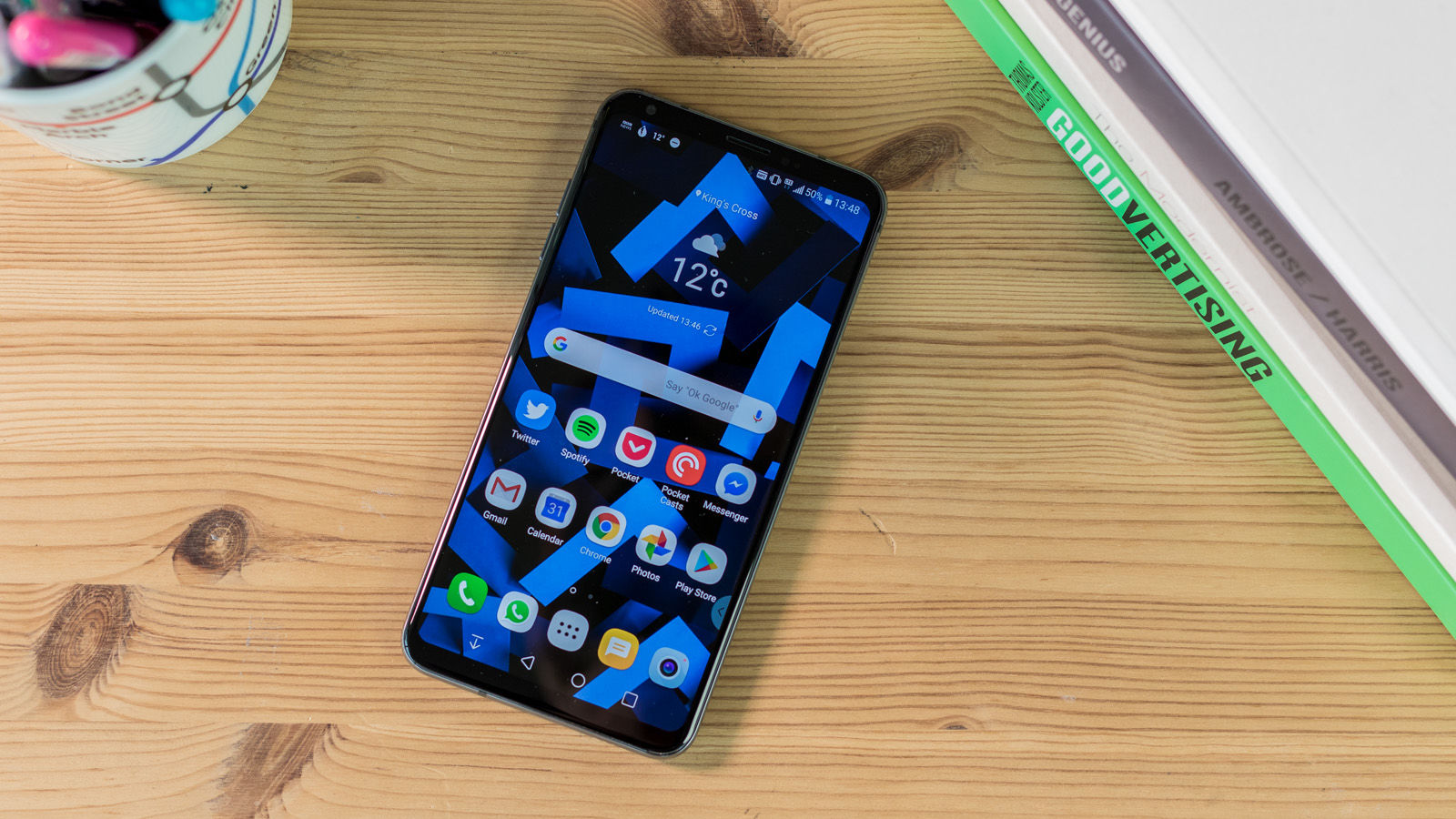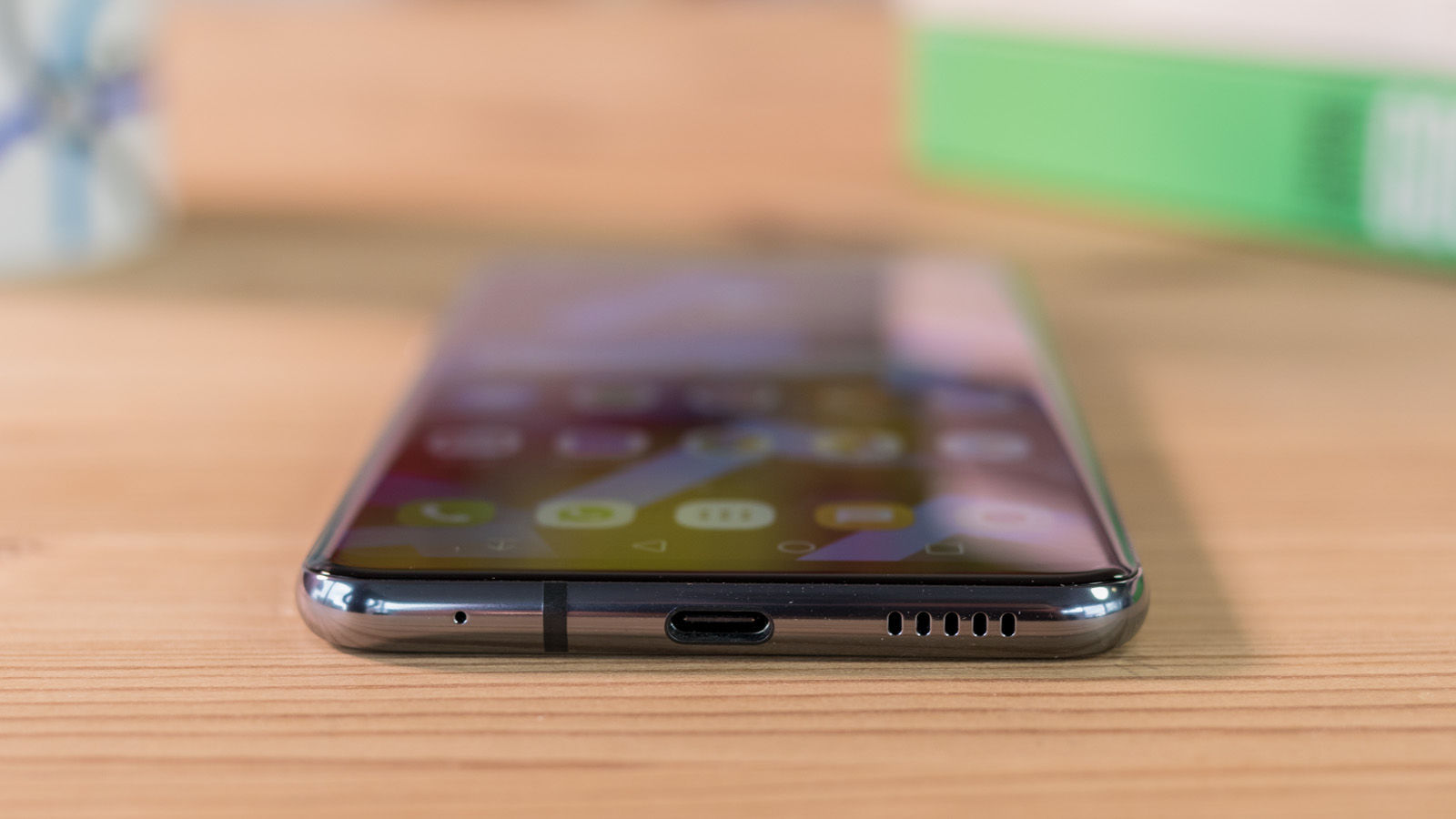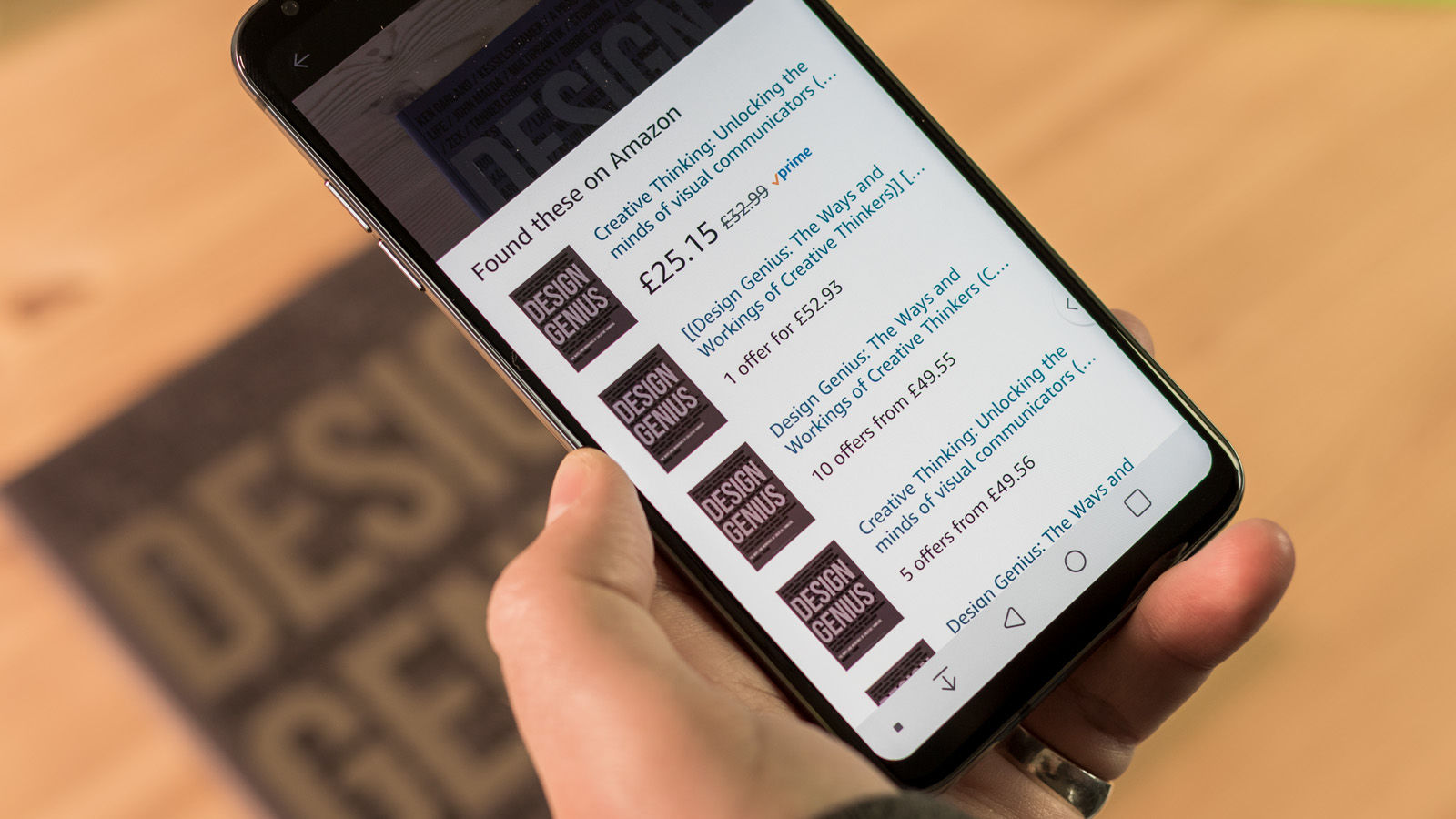LG released the V30S ThinQ at MWC 2018 promising an updated V30 but with ‘new integrated AI’. This is as misleading as the frustratingly pointless features themselves – but with better hardware specs than the old V30, it’s a better phone. ThinQ (pronounces ‘thing-queue’, apparently) is LG’s new branding for its electronics that have what it deems an AI feature – it launched ThinQ TVs recently too. LG’s decision making of late is shaky at best and the V30S ThinQ’s release in lieu of the expected G7 at MWC is odd – there is barely anything here different from the first V30. But the V30S is a beautiful, accomplished smartphone despite the wacky name and awkward release timing. It’s just a shame that the display lets it down by being under par.
Price and availability
At the time of writing the price and release date of the V30S ThinQ are both unconfirmed. The original V30 retailed for £799/$799 but can be found for around £599 at Carphone Warehouse – but be aware this is not the V30S ThinQ reviewed here. LG supplied us with a pre-production version of the V30S that it ensured us is representative of the final product. In our time with the device, the one hiccup was G Pay (the new replacement for Android Pay) would not let us add a payment card. Until a price and release date has been announced, we won’t score the phone. We actually tested the V30S+ ThinQ, the ‘+’ merely denoting the internal storage of 256GB. The 128GB model is the V30S ThinQ, there is no other difference. Go figure.
Design and build
On the outside, the V30S is exactly the same as the original V30. The dimensions, materials and weight are all the same, and only the eagle eyed will spot that the grey and blue colours it comes in are a shade different. This means the V30S is a slick, premium smartphone that we’ve loved using. In-hand feel is superb and makes 2017’s LG G6 look and feel like a prototype. The generous 18:9 6in OLED screen is easily manageable even with one hand at most times though typing will likely require two. The display itself isn’t curved but the sides of the bezels ever so slightly are, adding to the smooth, pebble like feel. The size is proportioned well enough that we weren’t constantly afraid of dropping it though. The V30S ThinQ has a glass and metal design. Gorilla Glass 5 on the front and rear is a real bonus for durability but yes, that means it attracts fingerprints. Our grey review unit wasn’t too bad though as lighter colour glass phones show smudges far less than dark ones. We like the design – it’s superbly understated and classy in comparison to the modular madness of the LG G5 from a couple of years back. It holds its own against fellow Korean Samsung and its Galaxy S line. As with most flagship LG phones, the fingerprint sensor on the rear is also a physical power button, and it works superbly. The dual cameras above the sensor are ever so slightly raised but the phone does not rock too much when used on a table. There’s also a B&O logo that belies the phone’s audio chops (more on that further in) and an LG logo. The design also hides antenna lines well in the rim of the body. Mercifully there is also a headphone jack. Along with the Galaxy S9, it could well be one of the only flagships this year to keep it. We still feel its omission is stupid, so the V30S wins out here against the Pixel 2 and Sony Xperia XZ2. IP68 water and dust resistance, the best available currently to smartphones, rounds off a fairly complete package. Also, the haptics on the V30S are the best we’ve yet seen on an Android phone. The iPhone X’s integrated haptic feedback is still the best there is, but the V30S uses it well too, particularly for tactile keyboard feedback and switches in the camera app.
Features and specs
As the V30S ThinQ is a tiny update to the V30, most of the specs are identical. The only hardware changes are an increase in RAM (from 4GB to 6GB), higher storage options (128GB or 256GB) and the two new colour hues: New Moroccan Blue and New Platinum Grey. Everything else is the same, including its major flaw.
Screen
Unfortunately, the display is the V30S ThinQ’s Achilles’ heel. It is not good enough for an OLED screen on a £799 phone. It’s noticeably blotchy and grainy, the best comparison we can think of is that it looks a little like parchment. It’s a 6in P-OLED with a 2880×1440 resolution and 537 ppi density. At a glance, it’s a vibrant, well calibrated OLED and HDR10 support. But as soon as we noticed the flaw, it ruined the whole experience of using the phone. It’s particularly noticeable on white, but after a while there’s a graininess to the whole display that simply isn’t present on OLEDs from Samsung, OnePlus and even LG itself in the Google Pixel 2 XL, despite the latter phone screen’s blue tint. We are being picky, but when you are spending this much money we feel obliged. Just as you may balk at the blue tint on the Pixel 2 XL or the less-than-vibrant older LCD iPhones, it must be said that the display is not good enough here. We’d go so far as to say it’s one of the only flaws in what is otherwise an outstanding product. The problems aren’t so noticeable when watching video, but for all other tasks it’s lurking there. And that is a huge shame. The screen is the most important part of a smartphone, the window through which everything else is viewed. The bad quality screen on the V30S importantly makes us hesitant to recommend it on a device so expensive.
Processor, memory and storage
Just like the V30, there’s a Snapdragon 835 paired with Adreno 540 grahpics, a winning combination. Although there is now the 845 in the Sony Xperia XZ2 and international Galaxy S9, the 835 is still an excellent chip also found in the Pixel 2 and OnePlus 5T. Performance is as slick as an LG phone has ever been, with animations, app switching and load times all wonderfully fast. And in the two upgrades over the original V30, there’s now more RAM and storage. The V30 has 64GB storage, while the 128GB model was marketed as the V30+ (the ‘+’ meaning more storage, where for other phones it often refers to extra screen size). Here, the V30S ThinQ has 128GB while the V30S+ ThinQ has 256GB. Both new V30S ThinQ models are upped to 6GB RAM from the older generation’s 4GB. 128GB as a base storage option is great seeing as most rivals plump for 64GB. And with both new models you get an SD card slot expandable up to 2TB. If you’re after lots of RAM and storage, the base V30S has better specs than the base Galaxy S9, which has 64GB and 4GB RAM.
Connectivity and audio
It’s in audio that the V30S ThinQ truly shines. What LG has accomplished here is head and shoulders above other phones and makes some rivals sound woefully worse in comparison. LG’s partnership with Bang & Olufsen has clearly paid off. The 32-bit Hi-Fi Quad DAC on-board processes sound better than any phone we’ve ever heard through headphones. Granted, we have some high-end headphones at our disposal but LG also includes decent in-ear B&O headphones in the box. Any included headphones are a rarity these days. LG’s software team has added sound presets and digital filters to the phone so you can tweak to your taste. Be warned that the DAC means audio can go dangerously loud, but the software can also turn down the volume when you plug in headphones to minimise the risk of hearing damage. All genres of music sound incredible, and in our testing songs by David Bowie, LCD Soundsystem and Nine Inch Nails not only sounded amazing but revealed audio detail we never knew was there before. If audio is your priority, this is the smartphone to buy in 2018. A shame then that the one down facing speaker is less than impressive, with no stereo speaker set up to be seen. It’s fine for Facebook videos or YouTube but for music and film then you have the outstanding output from the headphone jack. You charge the phone via the supplied USB-C quick charger, and the glass back means it’s also compatible with Qi wireless chargers, though at a slower rate. There’s also Bluetooth 5.0 and Google Daydream compatibility for VR. NFC for mobile payments is present, but our pre-production model wouldn’t play nice with G Pay so we couldn’t use it.
Cameras
The V30S ThingQ has dual cameras. The main shooter is a 16Mp sensor with f/1.6 (an aperture in mobile beaten only by the S9’s variable f/1.5) and autofocus while the wide angle 13Mp lens has f/1.9. The front facing camera as on the first V30 is still an underwhelming 5Mp. It baffles us that LG should produce such a premium phone with such a poor selfie camera. Shots are grainy and unattractive and nothing close to social media worthy. It’s a poor oversight. Luckily the rear cameras fair better. Despite the two sensors, the V30S doesn’t offer the popular portrait mode found on the iPhone X and 8 Plus, Galaxy S9 or even the single lens Pixel 2. Instead, LG continues to provide the lesser-found wide angle option. And you know what, it’s awesome. If you aren’t into portrait mode and instead simply want to capture more in your shots without having to stand far away from your subject, it’s excellent. LG has improved the functionality so you don’t get as much of a fishbowl effect that occurred on the G6. Click the image below to view some sample shots, including St Pancras hotel from the same position with and without wide angle turned on. The in-cupboard shot with Batman also shows how the phone can brighten low-light shots in some situations: But overall picture quality can be annoying grainy in very low light and oddly shaky unless you hold the thing stock still, the latter a problem the Pixel 2 in particular does very well in minimalising. Like with the other V30, the V30S is an accomplished video recording device. There are six resolution modes, including 1920×1080 FHD at 60fps and 3840×2160 UHD that produce often stunningly good video. Post-capture, the phone offers granular editing tools not often found on a mobile device. Along with audio, this is an excellent video machine, though one you’ll want to export from to a better display than the phone’s own for most editing purposes due to its faults. The main camera is also good, performing well in most conditions. Colours are quite accurate and results aren’t as saturated as with the S8, S9 and Pixel 2. But in terms of overall quality, those phones win out against the V30S. The software additions to the V30S ThinQ over the V30 are in the camera app, with new QLens and AI Cam modes. It’s not clear if they will be added to the V30 in a software update, but we think they probably will. AI cam isn’t really AI, but the software has some uses. Point the camera at a scene and the viewfinder pops up with words depending on the scene. A person in glasses will flash up with ‘eyewear’ and other words before the app selects ‘person’ mode accurately. Point it at a landscape in London and it says ‘architecture’ and ‘view’ before selecting ‘city’ mode. If you don’t want to select the correct shooting modes, the phone does it for you. Sometimes though it throws up words all over the screen and never selects a mode for you to shoot in. We ended up not using it much, and the V30S’ manual pro mode is good enough that if you know what you’re doing you’ll get better shots than on auto anyway. These are optional modes in the camera and represent the only software changes from the original V30. Also added to the V30S are LG exclusive voice commands for Google Assistant. Saying things like ‘Take a selfie on a wide angle’ work, but change the wording slightly and they probably won’t. We also only knew of this feature and what to say via a press release. Most buyers wouldn’t even know it was there. Plus despite the versatility of the video camera on-board, not many people are going to say ‘Take a summer blockbuster Cine Video’ in public. We assume that the first V30 will get these features in a software update at some point, further highlighting that the no-show of the G7 at MWC meant this updated V30 was rushed to market. There is zero reason to consider an upgrade, or even be annoyed if you bought the first V30.
Battery life
The 3,300mAh battery is non-removable unlike on the V10 and V20 and performs merely fine. Using it as our primary device off the charger at 8am, the phone lasted the whole way through the day ending at around 25% 12 hours later with medium-heavy use, Bluetooth to a smartwatch and regular music playback. It’s by no means the worst phone out there for battery, but other phones like the OnePlus 5T (also 3,300mAh) and Pixel 2 XL (3,520mAh) continuously outperform it. Thankfully there’s a Quick Charge 3.0 charger in the box which can charge 50% in 36 minutes in our tests, and it’s wireless charging compatible too.
Software and apps
Our V30S unit came with Android Oreo 8.0 and a 1 February 2018 security update (reviewed originally on 15 March). LG’s latest Android skin, UX 6.0, is its best ever. The rounded icons, colourful menus and less intrusive LG apps make for a better experience than the version shipped with the Nougat G6. That phone was the first non-Google device to ship with Google Assistant, and of course the V30S has it fully integrated too. There are still some annoying oddities though, like how the icons on the home screen stretch and ping back like they’re elastic when you try to swipe to a non-existent next screen, and the floating bar that replaces the V20’s second display is preferable but still not overly useful. Unless you really need a quick way to make a note, GIF, or call a favourite contact, then the bar is as gimmicky as the edge panels on Galaxy S phones. But at least you can turn it off. There’s also face recognition but it’s not as secure as Apple’s (best) or Samsung’s (second best), and the software warns you it can be fooled by pictures or similar looking people, not that we could fool it with either. Despite this it’s a nice to have feature. LG is notoriously bad for its bloatware but signs are good here. Our G6 was loaded with useless Korean carrier bloat that we couldn’t ever get rid of. Our V30S is better, with optional downloads of LG apps you can bypass. But this will be entirely region and carrier dependent, so be warned if you plan to import the phone to the UK or US. Even though Google apps are on the phone after set up, LG still duplicates Google Photos with Gallery, Google Calendar with Calendar and more besides. It also makes it quite hard to disable its own apps, leading to frustration. Henry is Tech Advisor’s Phones Editor, ensuring he and the team covers and reviews every smartphone worth knowing about for readers and viewers all over the world. He spends a lot of time moving between different handsets and shouting at WhatsApp to support multiple devices at once.









